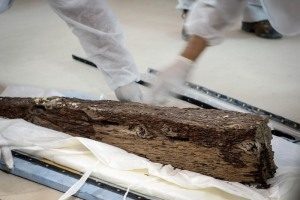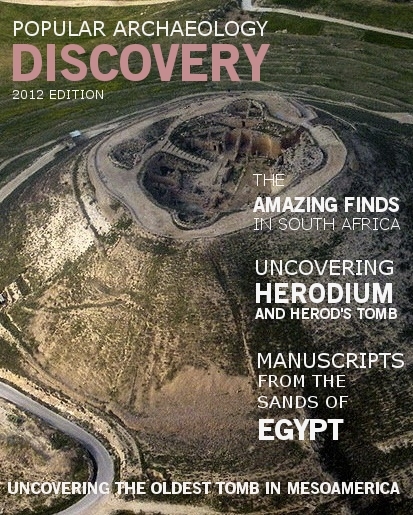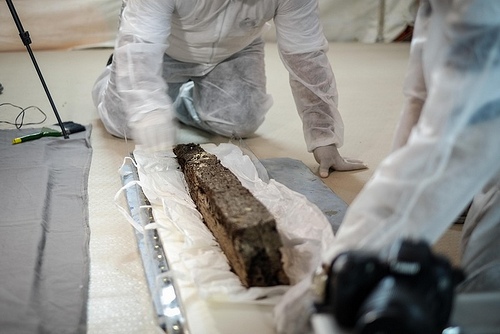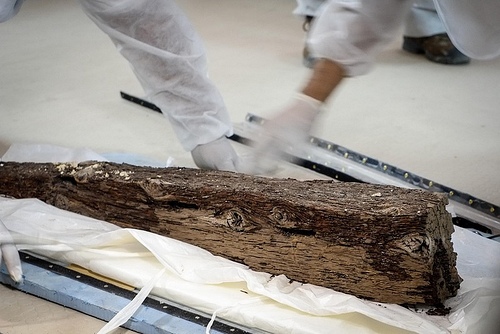
It was like looking at wood planks and timbers that were cut from their trees and shaped just a few decades ago. But these pieces were thousands of years old. About 4,500 years old, in fact.
With a sense of urgency, a team donned in special white hazmat-like suites, gloves and face-masks, like surgeons, swiftly yet methodically removed, handled and examined scores of carefully and artfully cut pieces of wood. They were priceless, because these specimens were as old as the pyramids of Egypt and they were in danger of beginning to disappear before their excavator’s eyes, like phantoms, if they weren’t handled and processed appropriately. These were parts of Pharaoh Khufu’s solar funerary vessel, anciently disassembled and packed meticulously into a stone pit grave beneath the sand at the foot of Khufu’s great pyramid over 4,500 years ago. Khufu was ancient Egypt’s Old Kingdom pharaoh at that time, or WAS before this boat was buried. But in 1987 the seal of the entombed boat had been breached and water, insects and fungi began to degrade the ancient, vulnerable wood. Severe damage had occurred as a result to some parts of the wood, and scientists found themselves in a race against time to recover the vessel before the outside world did more damage.
________________________________________________________________________________________________________________________
Above and below: Archaeologists carefully handle one of the first pieces of the 4,500 year old solar boat. The wood from the boat, while degraded severely in some areas, is still quite well preserved. Because of the desert climate, archaeologists have a much easier time preserving the boat than if it had been found in a more humid climate. Photo by Leyland Cecco/Transterra Media
_______________________________________________________________________________________________________________________
The find is currently touted to be among the greatest discoveries and excavation projects in Egypt’s long history of archaeological research. Like it’s sister boat excavated and assembled decades ago and now housed in the “Solar Boat Museum” adjacent to the Great Pyramid of Khufu on the Giza Plateau, this was a boat type known as a “solar barge“, a ritual vessel designed to carry the resurrected pharaoh with the sun god Ra across the heavens in the afterlife. It may never have touched water in real life, but this is a matter of further research.
With the help of a Japanese scientific team and technical experts from Japan’s Waseda University and the Japanese Institute for Restoration Research, members of the Egyptian Ministry of State for Antiquities and other Egyptian antiquities experts hope to be able to study and preserve, as well as completely assemble, the ancient bark. Apart from the sensational remains themselves, the boat, the Egyptian authorities anticipate, promises to provide another window on Old Kingdom Egypt, not just for scholars and historians, but for throngs of fascinated citizens and tourists, as well.
“The boat is a spectacular piece of engineering and building, and also provides insight into technology, trade, and aesthetics” effuses Salima Ikram, head of the Egyptology Unit at the famed American University in Cairo. “It is truly amazing to think that King Khufu actually might have travelled on this boat, after having ordered it to be made from cedar logs brought all the way from what is modern day Lebanon.”
Eventually, Egyptian authorities hope that future vistors will see a fully assembled boat housed and displayed on the Giza Plateau. The first solar boat, which has drawn countless tourists for many years, will be moved to the new Egyptian Museum.
_________________________________________________________________________________________________________________________
Read a detailed feature article about this Solar Boat and other fascinating discoveries with a premium subscription to Popular Archaeology Magazine. Find out what Popular Archaeology Magazine is all about. AND MORE:
 Popular Archaeology’s annual Discovery edition is a selection of the best stories published in Popular Archaeology Magazine in past issues, with an emphasis on some of the most significant, groundbreaking, or fascinating discoveries in the fields of archaeology and paleoanthropology and related fields. At least some of the articles have been updated or revised specifically for the Discovery edition. We can confidently say that there is no other single issue of an archaeology-related magazine, paper print or online, that contains as much major feature article content as this one. The latest issue, volume 2, has just been released. Go to the Discovery edition page for more information.
Popular Archaeology’s annual Discovery edition is a selection of the best stories published in Popular Archaeology Magazine in past issues, with an emphasis on some of the most significant, groundbreaking, or fascinating discoveries in the fields of archaeology and paleoanthropology and related fields. At least some of the articles have been updated or revised specifically for the Discovery edition. We can confidently say that there is no other single issue of an archaeology-related magazine, paper print or online, that contains as much major feature article content as this one. The latest issue, volume 2, has just been released. Go to the Discovery edition page for more information.
Subscription Price: A very affordable $5.75 for those who are not already premium subscribers of Popular Archaeology Magazine (It is FREE for premium subscribers to Popular Archaeology). Premium subscribers should email populararchaeology@gmail.com and request the special coupon code. Or, for the e-Book version, it can be purchased for only $3.99 at Amazon.com.






